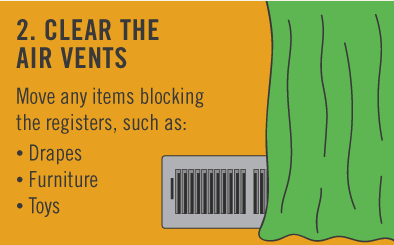Making Best Use Of Comfort And Cost Savings - Tips For Optimizing Your Heat Pump Efficiency
Making Best Use Of Comfort And Cost Savings - Tips For Optimizing Your Heat Pump Efficiency
Blog Article
Post Writer-Fulton Lindhardt
Whether you own a heatpump or have an existing central heating boiler back up, there are a couple of points that can be done to optimize your system for reliable operation. By adhering to these suggestions, you can take full advantage of comfort and cost savings without stressing your system or racking up power costs.
Adjusting your thermostat for effectiveness is one of the initial steps. Using zoning capacities to restrict home heating of vacant spaces is an additional efficient approach.
1. Establish Your Thermostat to the Right Temperature level
As the seasons change, stabilizing convenience and cost efficiency can be a difficulty. Fortunately, a few straightforward tips can assist you lessen power usage and maximize cost savings.
Start by determining the most effective temperature level for your family, then set your thermostat appropriately. Prevent making large raise and down in the temperature setup, as this will cause your heat pump to cycle on and off much more regularly, using up much more energy.
Instead, slowly reduced the temperature level in the evening for an extra comfy sleeping atmosphere. Then, increase it slightly in the early morning. Remember to keep air vents open and directed downward when heating, and up when cooling to maximize flow.
2. Evaluate Your Device On A Regular Basis
A heat pump system needs very little upkeep, yet it is necessary to examine the unit consistently to capture any problems before they end up being extreme. Clean interior filters on a timetable set by the supplier or when they're visibly unclean, and see to it outside devices have at the very least 2 feet of clearance to enable air movement.
Checking the device will certainly likewise include cleansing, tightening electric terminals, and running efficiency tests to ensure precision throughout home heating and cooling down modes. It's suggested to have a professional solution the heat pump twice a year. Executing these regular solutions can take full advantage of power savings and prolong the life of the device.
3. Clear Snow and Ice Around the Device
Heat pumps are created to operate outdoors and need to be free of snow and ice in order to distribute air. If your heat pump is obstructed by snow and can not reel in air, it will toggle in between cooling and heating and may overwork.
It's important to get rid of a two-foot clearance around your outdoor system in order to boost air flow and prevent ice accumulation. Heatpump typically get in a defrost mode in the winter months to thaw ice and snow yet this procedure can be problematic if your device is blocked by too much snow. This will reduce your power performance and lead to costly repair work expenses in the future.
4. Examine https://docs.google.com/spreadsheets/d/1QamJmgvCoo2gPNMF6CLm1hIOPmKaJ4V4g2VF7xUhWbQ/edit?usp=drive_link makes use of cooling agent to cool your home in summer and cozy it in wintertime. You can aid maximize its performance by routinely checking the refrigerant levels.
It takes much more power to transform the temperature level of your heat pump from a comfortable setting to a chillier one than it does to preserve that temperature. Transforming the temperature level for short periods of time can also squander energy.
Dripping air ducts and dirty air filters can result in uneven temperature levels. They can also make your heat pump less effective and cost more to operate. A specialist can locate and repair these problems to enhance your heat pump's performance.
5. Optimize Your Zoning Capabilities
Making use of the zoning capabilities of a heat pump can assist to reduce energy waste by heating only occupied rooms. This not just decreases energy consumption yet likewise reduces operating costs and expands the life of the system.
The Build Balanced Zones tool utilizes a genetic algorithm to develop areas that meet required zone structure standards. These standards consist of equal area, compactness, and equivalent number of features.
Furthermore, by utilizing wise thermostat modern technology to optimize the temperature setups based upon tenancy patterns and scheduling, you can further improve your heatpump's efficiency. Maintaining a tidy air filter, guaranteeing correct insulation and having your ductwork reviewed for performance can all contribute to improved energy financial savings too.
6. Shading the Outdoor Unit
Property owners often ask whether it's worthwhile to plant color trees near their outside air conditioning unit (AC) unit. The response is normally of course, as shading the air conditioner device can help reduce warm from the sunlight, which consequently assists it cool much more efficiently.
Nevertheless, it is very important to note that shielding the air conditioner system does not always reduce power intake. As clarified in the Discussion section of the FSEC record, the temperature of the surrounding air has a bigger influence on cooling down efficiency than does the quantity of air drew in by the air conditioning unit.
If your a/c compressor is on the south side of the house, take into consideration growing tall, deciduous trees with broad, vast canopies. These can supply ample shade within one year.